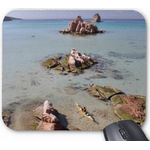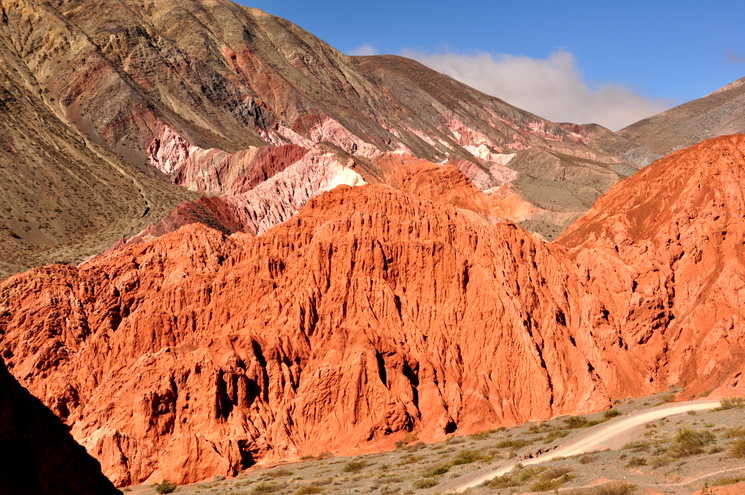• Logbook
• Road Stars
Photo album:
• Quebrada de Humahuaca
Lodging and eating:
• La Soñada Hostal (Humahuaca)
Download GPS files for Quebrada de Humahuaca:
• GPS track & waypoints
The Quebrada de Humahuaca is one of the must-see destinations in the NOA (Argentinian NorthWest). It has been declared a World Heritage Site both for its scenic and archaeological values. The towns of Purmamarca and Maimará exhibit postcard-pretty geological formations like the Hill of the 7 colors. In Tilcara, a Pucara from the inhabitants before the Incas and the conquistadores has been reconstructed.
Stage index:
June 24 and 25, 2011: From Jujuy to Purmamarca (Profile)
June 26, 2011: From Purmamarca to Tilcara (Profile)
June 27, 2011: From Tilcara to Humahuaca (Profile)
June 28, 2011: Humahuaca
Profile for the entire stage:
June 24 and 25, 2011: From Jujuy to Purmamarca
We leave Jujuy through the old road and avoiding the traffic of the new one. The route that today will take us to Purmamarca is frequented by buses running to La Quiaca, the border with Bolivia. This is a factor to consider because the respect for cyclists by bus drivers is zero. Some of them almost cause us a heart attack when they pass us.
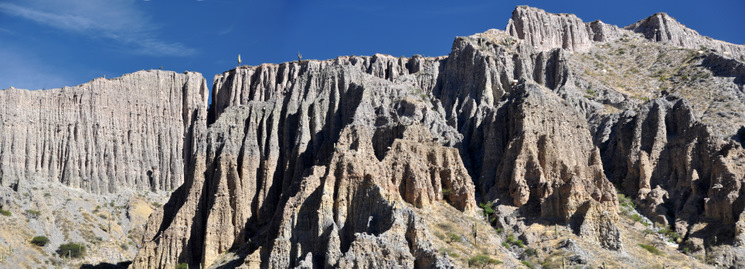
Today we begin to see the geological formations that have made this valley so famous. The rise of the Andes has provided this area of hills and slopes with strange colors. Without any worth mentioning, we arrive in Purmamarca, a town famous for its Cerro de los 7 Colores. After settling in the La Reliquia campground, we tour the village. The wind is icy and soon we take cover in a restaurant for dinner. And we go even faster from the restaurant to the tent.
The next morning, Judit doesn’t feel well, probably due to something she ate yesterday, so we stay at the campsite. She literally spends the day sleeping while recovering. I use the time to write some of the stories lagging.
June 26, 2011: From Purmamarca to Tilcara

Judit is already recovered and we resume our activity. We start climbing to the ridge across the road for a panoramic view of the Cerro de los 7 Colores. The trail ascends a steep slope where the rain has created deep ruts. From the top we have a spectacular view of the town, the famous hill and the Paseo de los Colorados behind it. The view is really spectacular, it seems placed there just to make it beautiful. The colored bands extend beyond the cerro, towards smaller hills nearby. Further to the left the same strata are exposed in a very surreal way but somewhat hidden from here. To see it you have to hike Los Colorados trail, our next activity.
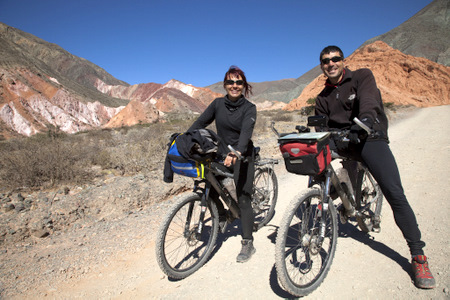
After these 2 short trips, we set off to Tilcara. En route we stop at Maimará, where there is another rather curious multicolored stratified formation. In this case, the slope of the mountain shows different layers in the form of arches one next to the other.

Our last visit of the day is in Tilcara. On the hill south of town they have reconstructed the fort that indigenous people used to resist first the Incas and then the Spanish. The truth is that they could have done a better job. At the top of the hill, they built a pyramid in honor of the archaeologists who worked at the site, that has nothing to do with the culture of the people who lived here. The necropolis at the foot of the hill is interesting, but like the rest of the site lacks explanatory panels that provide some interesting information.
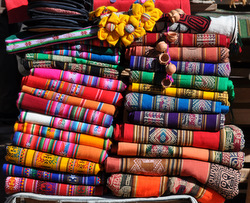
June 27, 2011: From Tilcara to Humahuaca
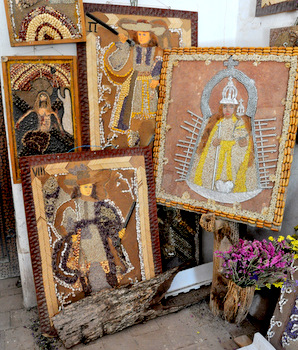
One of the highlights of today's route is crossing the Tropic of Capricorn. At the roadside there is a monument that looks like a giant sundial, but besides the traffic signal, there is no explanatory sign. A few miles later we finally get to Uquía. In its church the original paintings of the Arquebusier Angels are exposed. When we arrive, the church doors are closed and it take us some work to find Agapito, the person who is in charge. We're late just for a few minutes. If we hadn´t had a flat half an hour ago, we would had arrived on time. Agapito understands our mobility limitations and is kind enough to reopen the doors of the church for us to see this so unique collection. The story behind these paintings is this. The priests of Cusco commissioned the indigenous artists to paint a collection of angels. Obviously, the Indians had no idea what an angel was. The answer to their question was something like: an angel is like us but with wings, the most beautiful wings you can imagine. By "we" the Indians understood the conquistadores and their interpretation was that an angel is a sixteenth century Spanish soldier with wings. They painted soldiers with swords, spears and arquebuses. The most beautiful wings the Indians knew were the ones from the flamingos of the highland lakes and hence the ones in the paintings are pink. Uquía´s collection is not the only one, but it´s the one with larger canvases. Of the 9 original angels only 8 are still kept. At last we have seen with our own eyes these pieces of art that have been showing up from the Calchaquí valleys, hundreds of miles further south.
After the short visit we continue our way to Humahuaca, almost 10000 feet above sea level. We arrive shortly before sundown, so after settling in the welcoming Hostal La Soñada, we only have time to take a quick tour around the cobbled streets of Humahuaca before the cold forces us to return to the hostel. It seems that the cold polar wave is here to stay for a few more days.
June 28, 2011: Humahuaca
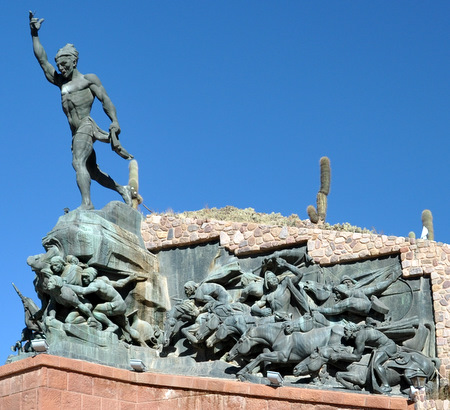
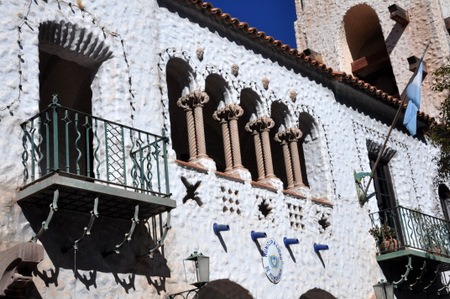
We visit the market a couple of times to buy vegetables and cheese for dinner. In the afternoon, only some of the stalls are open, but in the morning it´s busier, especially around the market where they sell other products in little stalls installed along the old railway line.
Although the town has a tourist infrastructure, from all we have visited in the quebrada, Humahuaca is the one that better retains the local character.


